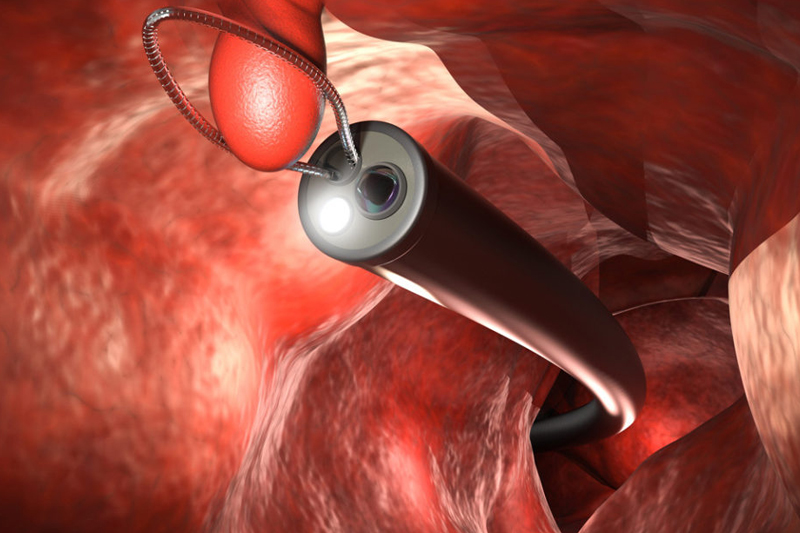Antegrade and Retrograde Enteroscopies

Antegrade and Retrograde Enteroscopies
Enteroscopy makes it conceivable to analyze or assess infections inside the body without making a cut in the body. Identifying issues in the small intestine or stomach is regularly utilized.
Overview
An enteroscopy (likewise called a push enteroscopy) is a clinical trial that is utilized to check out at within the small bowel. A kind of endoscopy method might be utilized in the finding and the executives of a few unique sorts of stomach related conditions. This test is finished utilizing an exceptional device called a push enteroscope (or at times by utilizing a pediatric colonoscope).
The enteroscope is a long, adaptable cylinder tube with a camera on the end that is embedded through the mouth, down into the throat and stomach, and into the duodenum (the primary part of the small digestive tract). With the utilization of the enteroscope, a doctor can really see within the gastrointestinal system, including the stomach and small digestive tract, and take at least one little bits of tissue (a biopsy) for review. Likewise, on the grounds that the small intestine is being accessed , it could be feasible to oversee treatment, for example, eliminating a polyp.
Some enteroscopes have plastic inflatables in them and are utilized for double-balloon enteroscopy (DBE) or single-balloon enteroscopy (SBE). The endoscope has one more tube inside it that can be utilized to venture further into the small digestive tract. The inflatables are utilized during the test to secure the endoscope in the gastrointestinal system.
This procedure might assist see into the gastrointestinal system, now and again into the last piece of the small intestine, which is known as the ileum. These strategies as a rule require specific preparation to oversee and make take more time to finish.

Why Is Enteroscopy Performed?
Enteroscopy makes it conceivable to analyze or assess illnesses inside the body without making an entry point. Used to identify issues in the small intestine or stomach. Your primary care physician might suggest enteroscopy assuming you have any of the accompanying.
- Abnormal X-ray results
- Unexplained severe diarrhea
- Unexplained malnutrition
- Intestinal damage from radiation treatment
- Abnormal gastrointestinal bleeding
- Tumors in the small intestine
- A high white blood cell count
- Blocked bowel passages
Our Services
Center for Digestive Care have exceptionally prepared gastroenterologist and is equipped for the board of all GI related diseases. We are one of the Best Gastroenterologist in Gurgaon. We have qualified doctors with different walks of life to treat your disease in the best way.
Types of Enteroscopy
There are many types of Enteroscopies such as follows:-
-
Anterograde enteroscopyAnterograde enteroscopy is where the enteroscope and overtube are progressed through the mouth and into the little entrail.
-
Retrograde enteroscopyRetrograde enteroscopy is where the enteroscope and overtube are progressed through the colon, with intubation of the terminal ileum, and afterward headway into the small gut.
-
Double Balloon EnteroscopyIn some cases called push-and-pull enteroscopy or assisted enteroscopy, double balloon enteroscopy is a nonsurgical methodology that finds and treats issues somewhere inside the little entrail. It utilizes an adaptable cylinder with a camera (an endoscope) that is set inside a more extensive cylinder. A gastroenterologist guides the two tubes into the small digestive system. Each tube has an balloon toward one side. On the other hand swelling and collapsing the balloon and cautiously moving back and forth, the specialist can gather together the small intestine onto the external tube, one segment at a time, practically like assembling a shade onto a drape pole or pushing a sleeve up on your arm.
-
Single Balloon EnteroscopySingle balloon enteroscopy, an improved on rendition of the double balloon method, utilizes one balloon rather than two. The two procedures are viewed as protected and compelling for exploring and treating issues in the small entrail.Motorized Spiral EnteroscopySpiral enteroscopy utilizes an special tube with a pivoting spiral put over the endoscope, which permits the scope to move to and fro in the small intestine as the winding turns. A little engine is joined to the twisting so the doctor have some control over when to draw in the spinning system.
Spiral enteroscopy works like balloon enteroscopy, yet it utilizes the spiral rather than balloons to assist with propelling the extension. Like balloon enteroscopy, spiral enteroscopy can dive deep into the small gut.Video Capsule EndoscopyThe small intestine can likewise be inspected after the patient swallows a pill molded capsule with a camera that accepts huge number of pictures as it goes through the gastrointestinal tract. This system, called capsule endoscopy, can be utilized to analyze the whole length of the small bowelDouble Balloon EnteroscopyIn some cases called push-and-pull enteroscopy or assisted enteroscopy, double balloon enteroscopy is a nonsurgical methodology that finds and treats issues somewhere inside the little entrail. It utilizes an adaptable cylinder with a camera (an endoscope) that is set inside a more extensive cylinder. A gastroenterologist guides the two tubes into the small digestive system. Each tube has an balloon toward one side. On the other hand swelling and collapsing the balloon and cautiously moving back and forth, the specialist can gather together the small intestine onto the external tube, one segment at a time, practically like assembling a shade onto a drape pole or pushing a sleeve up on your arm.
Treatment Process
Digestive Diagnosis
First step of process
Review your medical records.
Our second easy step
Check and test blood pressure.
Important third step
Run tests such as blood tests.
Solution in final step
Other specialized tests.
Meet Our Team
Have Years of Real World
Experience
Our administration and support staff all have exceptional people skills and trained to assist you with all medical enquiries. Doctors will be available from 9 AM : 8:30 PM , kindly call to confirm your Appointment

Dr Rajesh Kumar Pradhan

Dr Kapil Dev Jamwal


